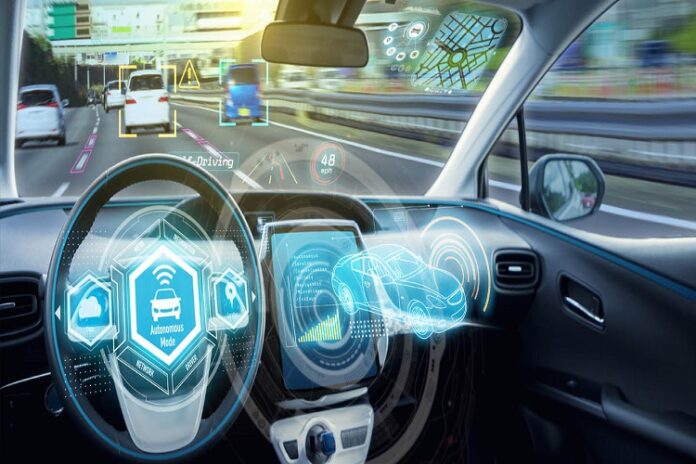Ensuring safety on the road is a paramount concern for drivers and passengers. With advancements in automotive technology, modern cars have many safety features and technologies that aim to minimize the risk of accidents and protect occupants.
These innovative systems work together to provide a safer driving experience and offer peace of mind to car owners. One resource providing valuable information on car safety features is the website 7engine.net. This article will explore today’s most prominent car safety features and technologies.
Anti-lock Braking System
Modern cars must have the ABS, or anti-lock braking system, as it is a vital safety component. ABS keeps the wheels from locking up when braking suddenly, allowing the driver to maintain control of the steering. By rapidly modulating brake pressure to each wheel, ABS ensures optimal braking performance on various road surfaces, reducing the risk of skidding and preserving stability.
Airbags
Airbags have become a standard safety feature in almost every car. These inflatable cushions are designed to deploy rapidly in a collision, providing a cushioning effect to protect the occupants from severe impact. Modern cars feature multiple airbags strategically placed throughout the vehicle, including front, side, and curtain airbags, providing comprehensive protection to the driver and passengers.
Electronic Stability Control
Electronic Stability Control, or ESC, is a sophisticated safety technology that helps drivers maintain control of their vehicles during challenging driving conditions. Using sensors to monitor factors such as steering input, vehicle yaw, and wheel speed, ESC applies individual brakes and adjusts engine power to prevent loss of control, especially in situations like oversteering or understeering. This feature significantly enhances vehicle stability and reduces the risk of skidding or rollover accidents.
Lane Departure Warning
Lane Departure Warning systems use cameras or sensors to monitor lane markings on the road. Suppose the vehicle deviates from its lane without the use of turn signals. In that case, the system alerts the driver through visual, audible, or haptic feedback, helping them correct their course and avoid unintentional lane departure. LDW is particularly valuable in preventing accidents caused by drowsy driving or driver distraction.
Adaptive Cruise Control
Adaptive Cruise Control is an advanced feature that enhances the convenience and safety of long-distance highway driving. Using radar or laser sensors, ACC maintains a preset distance from the vehicle ahead, automatically adjusting the car’s speed to match the traffic flow. In case of sudden deceleration or when the vehicle early comes to a stop, ACC can bring the car to a complete halt and resume acceleration when it’s safe.
By visiting Learn2drive4free, drivers can learn about the intricacies of Adaptive Cruise Control, such as setting the desired following distance, understanding the system’s limitations, and how to override or disable the feature when necessary.
Blind Spot Detection
Blind Spot Detection systems utilize sensors or cameras to monitor the areas alongside and behind the vehicle that may not be visible to the driver. If another vehicle enters the driver’s blind spot, BSD alerts the driver through visual or auditory signals, ensuring safe lane changes and minimizing the risk of collisions. BSD is especially beneficial in heavy traffic or when merging lanes on highways.
Forward Collision Warning
Forward Collision Warning systems utilize sensors, cameras, or radar to monitor the distance between the car and the vehicle ahead. If the system detects a potential collision, it alerts the driver through visual or auditory warnings, giving them time to react and apply the brakes. FCW can significantly reduce the risk of rear-end collisions, especially in situations where the driver may be distracted or reaction time is limited.
Autonomous Emergency Braking
Autonomous Emergency Braking systems work with FCW to automatically apply the brakes when a collision is imminent, and the driver fails to respond in time. AEB can detect pedestrians, cyclists, and other vehicles using sensors and advanced algorithms and intervene to mitigate or avoid a collision. This technology is a significant step toward preventing accidents and reducing the severity of crashes.
Tire Pressure Monitoring System
Maintaining proper tire pressure is crucial for optimal vehicle handling and safety. TPMS continuously monitors the air pressure in all four tires and alerts the driver if the pressure drops below the recommended level. By ensuring the tires are correctly inflated, TPMS improves vehicle stability, reduces the risk of tire blowouts, and enhances fuel efficiency.
Rearview Cameras
Rearview cameras, or backup cameras, provide drivers with a clear view of the area behind the vehicle while reversing. By displaying the live footage on a screen inside the car, these cameras assist drivers in avoiding obstacles, pedestrians, or other vehicles that may not be visible through the rearview mirror alone. Rearview cameras are particularly beneficial in preventing backover accidents, especially in crowded areas or tight parking spaces. For further guidance on learning how to drive and utilizing such safety features, visit Monotukuru.com.
Conclusion
Car safety features and technologies have come a long way in enhancing road safety and minimizing the risk of accidents. From ABS and airbags to advanced systems like ESC, LDW, and AEB, these innovations prioritize occupant protection and vehicle stability.
Embracing these technologies provides peace of mind and contributes to creating safer roads for everyone. Remember, staying up-to-date with the latest safety features and using them responsibly can significantly reduce the likelihood and severity of accidents on the road.









